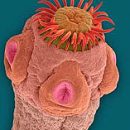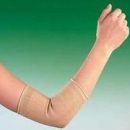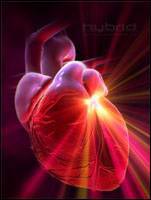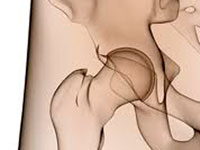SHEGREEN SYNDROM (FROM) is a relatively rare autoimuminous disease. Nevertheless, it may threaten enough serious complications. Learn about this disease more.
Content
SHEGREEN SYNDROM (FROM) — Relatively rare disease in the population, but the second in the frequency of occurrence among autoimmune diseases, after systemic red lupus. Various assumptions about the causes of the development of the syndrome are expressed, among which the greatest popularity has a viral theory in aggregate with genetic predisposition.
Who is Shegran (ocked), and why called the syndrome
 Heinrich Shegren, or Shegran, as established in Russian transliteration, Swedish ophthalmologist, first saw the relationship between dry eyes, mucous meal and pain in the joints and muscles, combining these symptoms into a single syndrome. Applying difficult research methods at that time, having done a lot of work in this direction, the thirty-year-old Shegran was confident in its right. In parallel, the French ophthalmologist Henry Guegerot led to work in this direction.
Heinrich Shegren, or Shegran, as established in Russian transliteration, Swedish ophthalmologist, first saw the relationship between dry eyes, mucous meal and pain in the joints and muscles, combining these symptoms into a single syndrome. Applying difficult research methods at that time, having done a lot of work in this direction, the thirty-year-old Shegran was confident in its right. In parallel, the French ophthalmologist Henry Guegerot led to work in this direction.
I later choosing a doctor-clinician career, Shegran had vain hopes to defend his doctoral dissertation on this topic relatively early compared to his colleagues, but suffered fiasco, meeting skeptical reviews about his work on the part of colleagues. Only abroad, after some time, the dry syndrome was recognized as existing, and the discoverer was awarded the professorship at sunset his career, and also left his last name in his name.
When dry syndrome proceeds interrelated with other disorders, and is called syndrome. In the event that the symptoms described below are occurring isolated in healthy in the rest of the person, they talk about SEGREEN Disease.
SHEGREEN SYNDROM SYNDROM WITH SHEGREEN-LARSSON SYNDROM. The latter has completely different «Inventors» — Shegran and Larsson were Swedish psychiatrists, and the essence of their discovery lies in serious congenital syndrome. Mental backwardness, a certain form of cerebral palsy and congenital ichthyosis — Changes to the skin are characteristic of SHEGREEN-Larsson syndrome.
Symptoms and manifestations of SHEGREEN syndrome
Shegren syndrome in 90% of cases develops in women, and their age is often nearing forty years. Symptoms of SHEGREEN syndrome, despite clear outlines, can remain unnoticed for a long time, and attribute stress, working with a computer, fatigue and lack of sleep, the side effect of some drugs.
Violation of the cellular structure of the external secretion glands — salivary, tear, sweat, genital, glands of the digestive tract creates a specific picture, the elements of which may not coincide with the development time and mislead the diagnostic.
The most frequent and classic symptoms of SHEGREEN syndrome are:
- Dry, itching, the feeling of sand in the eyes.
- Dry mouth.
In addition, gastritis, skin lesions, frequent caries, damage to the nasal cavity of unexplained etiology, glomerulonephritis, damage to peripheral vessels, polyneuropathy, joint pain and muscles.
Diagnosis and forecasting
 The severity of the flow of syndrome is individual, its heavy manifestation and death from the defeat of vital organs, more often — kidney. More often the disease proceeds with long periods of remission and rare exacerbations.
The severity of the flow of syndrome is individual, its heavy manifestation and death from the defeat of vital organs, more often — kidney. More often the disease proceeds with long periods of remission and rare exacerbations.
In the forecast, it is also necessary to take into account the patient's response to therapy, which until today remains non-specific, and is aimed at suppressing autoimmune reactions with hormonal means.
People living with SHEGREEN syndrome have a higher risk of developing non-Hodgkinsky lymphoma than the averagePopulation, and may also have children with autoimmune disorders.
The diagnosis of SHEGREEN syndrome is difficult and lies in the objectification of data, as well as confirmation of the presence of characteristic changes in the structure of the gland with radiation techniques and microscopy of their tissues.









